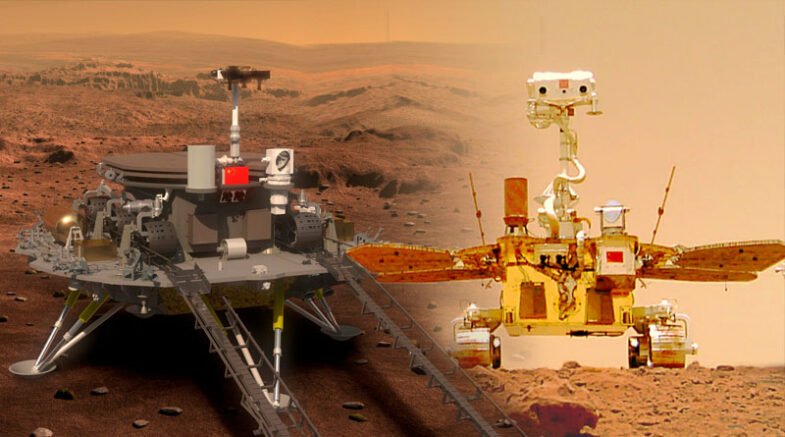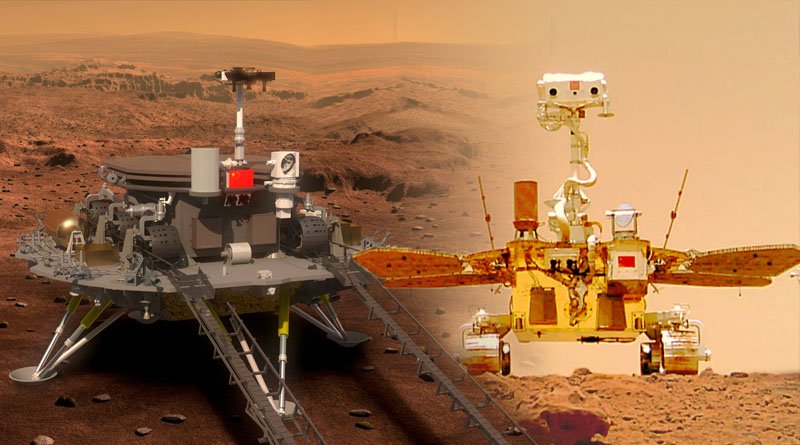In a new paper, ground-penetrating radar data from Zhurong show evidence of craters that are barely below Mars’ surface as well as other sloping features with unknown origins.

One of the few glimpses into what lies beneath Mars’ surface has been provided by the Zhurong rover of China. In a new paper, ground-penetrating radar data from Zhurong show evidence of craters that are barely below Mars’ surface as well as other sloping features with unknown origins.
The image of the Martian surface, which reveals a number of distinct features, contrasts sharply with the lunar surface’s shallow subsurface structure, which was also discovered by ground-penetrating radars. Fine layers that have been pulverised by a barrage of micrometeorite impacts make up the moon’s top 33 feet (10 metres).
The thin atmosphere of Mars, which protects against micrometeorites and also weathers the surface, may account for the difference. According to Yi Xu, the study’s lead author, “We found a lot of dunes on the surface at the landing site, so maybe this crater was quickly covered by the sand and this cover reduced space weathering, so we can see the full shape of these craters’ walls.”
In July 2020, Zhurong and the Tianwen 1 mission orbiter launched, and in May 2021, they touched down in the expansive plain of Utopia Planitia. Over the course of the following Earth year, the rover moved 6,302 feet (1,921 metres) south from its landing spot.
The landing site was selected using engineering and scientific criteria because it was believed that the region contained the shorelines of a potential ancient ocean.
The purpose of Zhurong’s ground-penetrating radar, which pings electromagnetic signals off beneath-the-surface rocks and gathers their reflections, was to look for indications of water or ice trapped below the surface.
The frequency used for this study uses two different frequency ranges to provide fine detail, but only to a depth of approximately 15 feet (4.5 m). While the other radar frequency does go down to about 260 feet, this study did not find any water (80 m).
The sloping reflectors that China Zhurong Mars rover travelled through were captured in radar images, photographs, and maps. It is anticipated that the opening of this window into the subsurface of Mars will provide information about the planet’s geological past, provide clues about earlier climate conditions, and possibly even reveal the presence of water or ice.
Perseverance, a NASA spacecraft, has a ground-penetrating radar instrument that provides it with new knowledge about its surroundings, including the Jezero Crater floor on Mars.
The Zhurong rover’s exact whereabouts are currently unknown. As winter in Mars’ northern hemisphere approached in May 2022, the solar-powered rover went into hibernation.
The rover was supposed to resume its autonomous operations in December, but Chinese space authorities have not responded to the rover’s apparent silence from the rover. Reconnaissance Orbiter images from orbit reveal that the rover has not moved since the start of its hibernation period. As the temperature and lighting conditions in Utopia Planitia get better, the rover might awaken.
